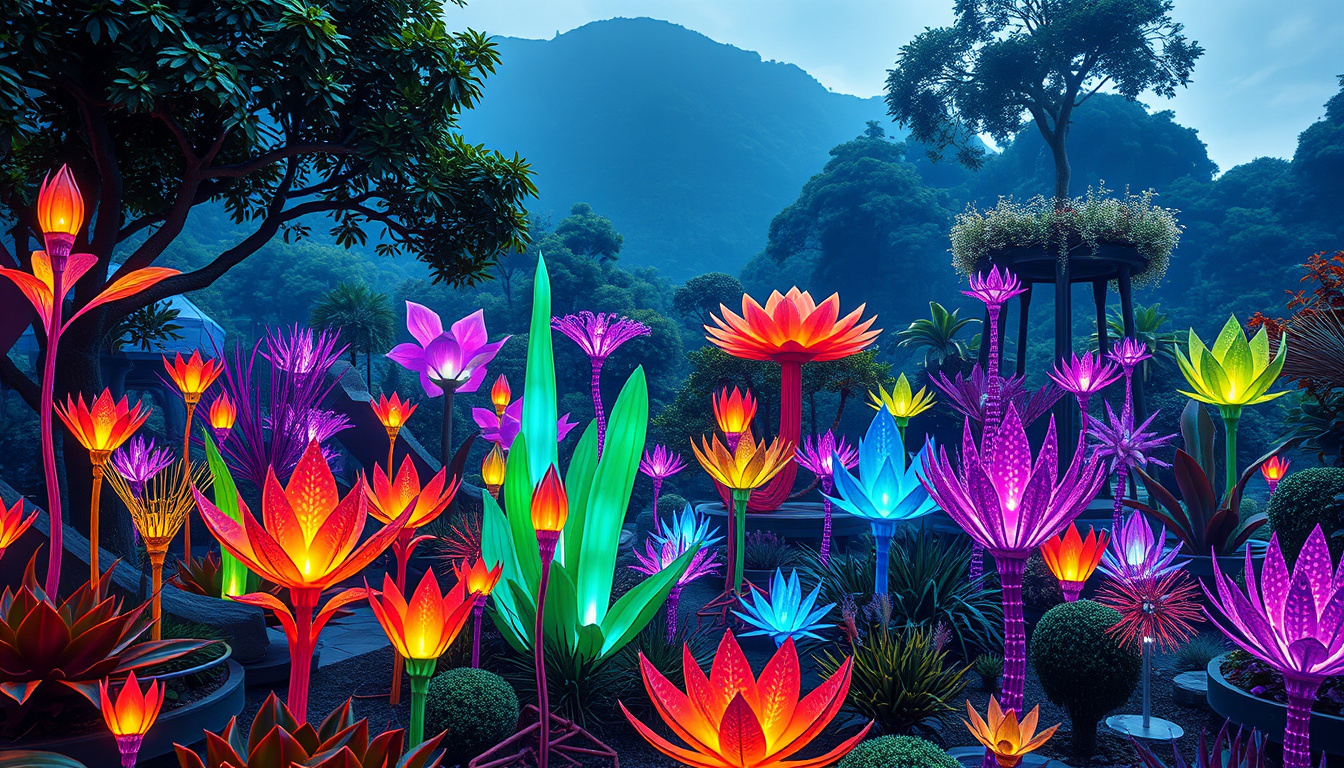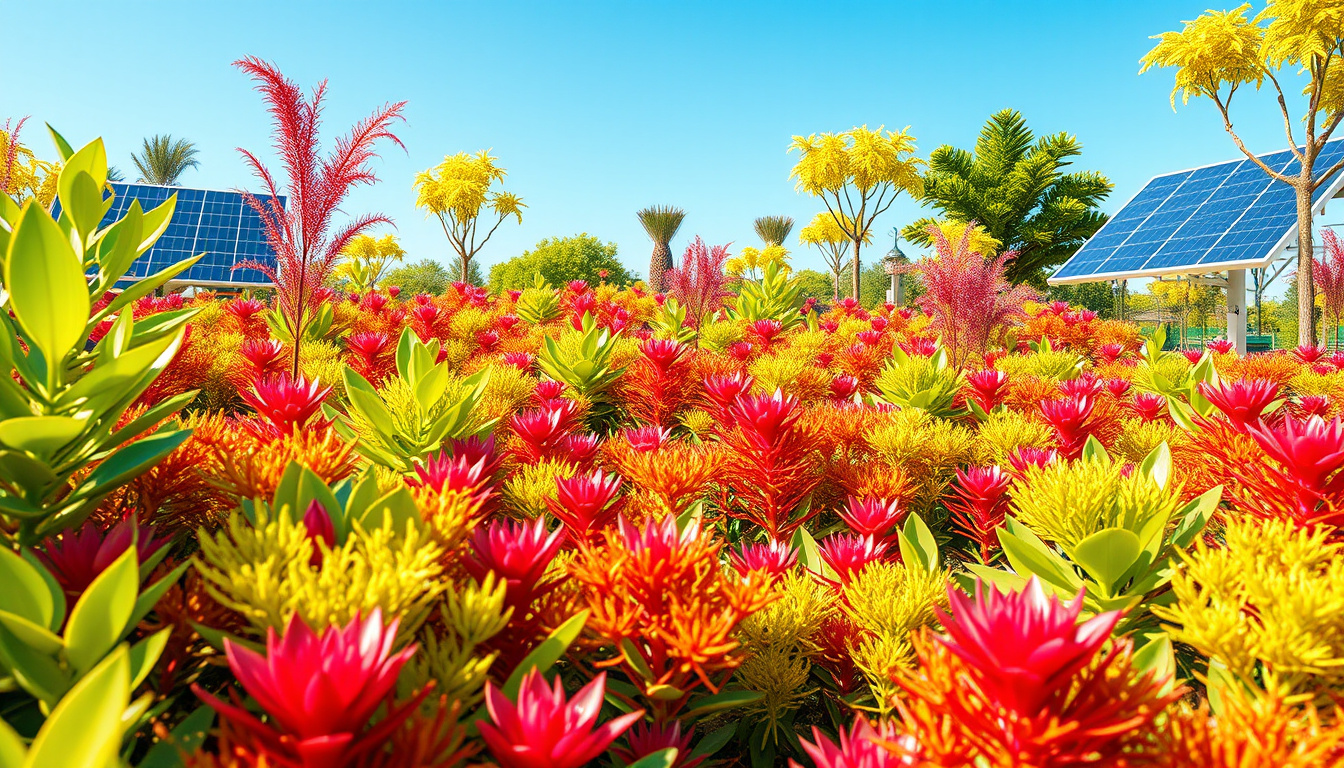
Exploring the Wonders of Synthetic Flora: The Future of Artificial Plant Life
Are you tired of plant care routines that always seem to fall short? Welcome to the world of synthetic flora, where the beauty of nature meets innovative technology! As we navigate through urban landscapes, finding the perfect balance between greenery and convenience has never been more essential. In this exploration of synthetic plants, we'll delve into the science behind their creation, their applications in enhancing city life, and how they can revolutionize our approach to sustainable living. Join us as we uncover the wonders of synthetic flora and their potential to redefine our relationship with nature.

TLDR (Key Takeaways)
- Synthetic flora represents a groundbreaking advancement in the field of artificial plant life.
- The creation of synthetic plants involves innovative scientific techniques that mimic natural processes.
- Urban environments can greatly benefit from synthetic flora by improving air quality and aesthetics.
- Synthetic plants offer potential environmental benefits, such as reduced resource consumption and enhanced biodiversity.
- The development of synthetic flora raises important ethical considerations that must be addressed for sustainable integration.
Introduction to Synthetic Flora
🌿 Introduction to Synthetic Flora Have you ever walked into a beautifully adorned space only to be taken aback by how fresh and vibrant it feels, yet there's no sign of nature in sight? Welcome to the world of synthetic flora! These artfully crafted replicas of real plants and flowers have gained immense popularity in home decor for their ability to elevate ambiance without the maintenance needs of living greenery. Whether you're looking to enhance your interior with lush, evergreen aesthetics or seeking a touch of color in your modern space, synthetic flora offers versatility and longevity that caters to all decor styles. Additionally, the appeal of these artificial plants extends beyond aesthetics; they can also cater to those with allergies or busy lifestyles, making them a practical choice for homes across South Africa. Join us as we delve deeper into how synthetic flora can transform your home, providing tips on style, placement, and the best types to enhance your interior design.
The Science Behind Creating Synthetic Plants
Creating synthetic flora is both an art and a science, bridging the gap between nature and innovation. At the heart of synthetic plant design lies the use of high-quality materials that mimic the look and feel of real plants. These materials can include plastics, silk, and other composites that not only replicate the delicate features of natural foliage but also boast durability and longevity. The process starts with detailed research into various plant species, paying attention to their shapes, colors, and textures. Designers utilize advanced manufacturing techniques such as 3D printing to produce intricate details, ensuring that every leaf and petal has realistic nuances. Once the basic forms are created, coloring techniques come into play, involving paints and dyes that are UV resistant to ensure that synthetic flora retains its vibrant appearance without fading in sunlight. The versatility of synthetic plants allows homeowners in South Africa to enhance their decor with lush greenery, regardless of the local climate or their level of plant care expertise. Synthetic flora offers the beauty of nature without the commitment, making it a popular choice for modern interiors.
'Nature does not hurry, yet everything is accomplished.' – Lao Tzu
Applications of Synthetic Flora in Urban Environments
Synthetic flora refers to artificially created plants or plant-like structures that can serve various purposes in urban environments. As cities continue to expand, the application of synthetic flora is gaining popularity for several reasons. One primary benefit is its ability to enhance aesthetic appeal without the maintenance requirements associated with natural plants. This is particularly advantageous in settings where the climate may not support traditional landscaping or where maintenance costs are prohibitive. Moreover, synthetic flora can also play a critical role in improving air quality. Some designs incorporate materials that filter pollutants, allowing for cleaner urban air. Urban planners are increasingly exploring synthetic flora as a viable alternative to traditional greenery, especially in densely populated areas where space is at a premium. From vibrant installations on building facades to creative indoor designs in malls and workplaces, synthetic flora can transform urban spaces, providing a touch of nature where it might otherwise be lacking. In addition to beautification, synthetic flora can contribute to sustainability goals. For example, some synthetic plants are designed to capture rainwater, thereby reducing runoff and promoting better water management in cities. This application not only enhances urban landscapes but also aligns with green building certifications, appealing to environmentally conscious developers and residents alike. Overall, the integration of synthetic flora within urban designs represents innovative thinking that meets both aesthetic and practical needs of modern cities.

Environmental Benefits of Synthetic Plant Life
When it comes to enhancing your home decor while being mindful of the environment, synthetic flora stands out as a remarkable choice. These artificial plants not only bring the refreshing allure of greenery into your living space but also come with a host of environmental benefits. First and foremost, by choosing synthetic plants, you help reduce the demand for harvested natural plants, which in turn conserves biodiversity and protects ecosystems. Real plants often require significant water, pesticides, and fertilizers, contributing to environmental strain - a concern that synthetic flora elegantly sidesteps. Moreover, synthetic plants are highly durable, meaning they won't wilt, die, or need to be replaced frequently, leading to less waste over time. Finally, many synthetic plant products are made with recyclable materials, allowing for a more sustainable lifecycle than traditional plant sourcing. In summary, when you incorporate synthetic flora into your home, you not only enhance your decor but also make a thoughtful choice towards a greener planet.
Challenges and Ethical Considerations in Synthetic Flora Development
As the field of synthetic flora development continues to grow, various challenges and ethical considerations emerge that warrant careful attention. One primary challenge is the technical complexity involved in creating synthetic plants that not only mimic the aesthetic qualities of natural flora but also function effectively in their environments, contributing to ecosystems in meaningful ways. Additionally, there are significant ethical implications regarding how synthetic flora might impact biodiversity. Concerns arise about the potential displacement of native species and the unintentional consequences of introducing synthetic organisms into natural habitats. The environmental footprint of producing synthetic materials also raises questions about sustainability, prompting discussions on whether synthetic flora can truly offer a greener alternative to traditional landscaping. Ultimately, addressing these challenges requires a collaborative approach involving scientists, ethicists, and the community to ensure that the benefits of synthetic flora do not come at the cost of ecological integrity.
Frequently Asked Questions
What is synthetic flora?
Synthetic flora refers to artificially created plants designed to mimic the structure and function of natural plants. These innovative creations can enhance urban landscapes, contribute to environmental sustainability, and serve various practical applications.
How are synthetic plants created?
The creation of synthetic plants involves advanced technologies, including bioengineering and 3D printing. Scientists design these organisms to replicate the photosynthesis process, water absorption, and other functions typical of natural plants.
What are some potential applications of synthetic flora in urban environments?
Synthetic flora can be used in urban environments for purposes such as air purification, temperature regulation, noise reduction, and enhancing aesthetic appeal. They can serve as green walls, artificial gardens, or even decorative elements in public spaces.
What environmental benefits do synthetic plants offer?
Synthetic plants provide several environmental benefits, including reducing carbon dioxide levels, improving urban biodiversity, requiring less maintenance and water than natural plants, and potentially replacing the need for traditional landscaping that may consume more resources.
What are the ethical considerations surrounding synthetic flora?
Ethical considerations include the potential impact on natural ecosystems, the health and safety of synthetic organisms, the implications of replacing natural plants in urban settings, and broader concerns about genetic manipulation and biodiversity.
















